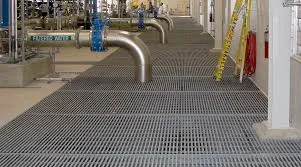
-
 Afrikaans
Afrikaans -
 Albanian
Albanian -
 Amharic
Amharic -
 Arabic
Arabic -
 Armenian
Armenian -
 Azerbaijani
Azerbaijani -
 Basque
Basque -
 Belarusian
Belarusian -
 Bengali
Bengali -
 Bosnian
Bosnian -
 Bulgarian
Bulgarian -
 Catalan
Catalan -
 Cebuano
Cebuano -
 China
China -
 China (Taiwan)
China (Taiwan) -
 Corsican
Corsican -
 Croatian
Croatian -
 Czech
Czech -
 Danish
Danish -
 Dutch
Dutch -
 English
English -
 Esperanto
Esperanto -
 Estonian
Estonian -
 Finnish
Finnish -
 French
French -
 Frisian
Frisian -
 Galician
Galician -
 Georgian
Georgian -
 German
German -
 Greek
Greek -
 Gujarati
Gujarati -
 Haitian Creole
Haitian Creole -
 hausa
hausa -
 hawaiian
hawaiian -
 Hebrew
Hebrew -
 Hindi
Hindi -
 Miao
Miao -
 Hungarian
Hungarian -
 Icelandic
Icelandic -
 igbo
igbo -
 Indonesian
Indonesian -
 irish
irish -
 Italian
Italian -
 Japanese
Japanese -
 Javanese
Javanese -
 Kannada
Kannada -
 kazakh
kazakh -
 Khmer
Khmer -
 Rwandese
Rwandese -
 Korean
Korean -
 Kurdish
Kurdish -
 Kyrgyz
Kyrgyz -
 Lao
Lao -
 Latin
Latin -
 Latvian
Latvian -
 Lithuanian
Lithuanian -
 Luxembourgish
Luxembourgish -
 Macedonian
Macedonian -
 Malgashi
Malgashi -
 Malay
Malay -
 Malayalam
Malayalam -
 Maltese
Maltese -
 Maori
Maori -
 Marathi
Marathi -
 Mongolian
Mongolian -
 Myanmar
Myanmar -
 Nepali
Nepali -
 Norwegian
Norwegian -
 Norwegian
Norwegian -
 Occitan
Occitan -
 Pashto
Pashto -
 Persian
Persian -
 Polish
Polish -
 Portuguese
Portuguese -
 Punjabi
Punjabi -
 Romanian
Romanian -
 Russian
Russian -
 Samoan
Samoan -
 Scottish Gaelic
Scottish Gaelic -
 Serbian
Serbian -
 Sesotho
Sesotho -
 Shona
Shona -
 Sindhi
Sindhi -
 Sinhala
Sinhala -
 Slovak
Slovak -
 Slovenian
Slovenian -
 Somali
Somali -
 Spanish
Spanish -
 Sundanese
Sundanese -
 Swahili
Swahili -
 Swedish
Swedish -
 Tagalog
Tagalog -
 Tajik
Tajik -
 Tamil
Tamil -
 Tatar
Tatar -
 Telugu
Telugu -
 Thai
Thai -
 Turkish
Turkish -
 Turkmen
Turkmen -
 Ukrainian
Ukrainian -
 Urdu
Urdu -
 Uighur
Uighur -
 Uzbek
Uzbek -
 Vietnamese
Vietnamese -
 Welsh
Welsh -
 Bantu
Bantu -
 Yiddish
Yiddish -
 Yoruba
Yoruba -
 Zulu
Zulu
high pressure fiberglass pipe
High Pressure Fiberglass Pipes An Overview
In the world of industrial applications, the demand for reliable and durable piping systems has led to the increasing popularity of high-pressure fiberglass pipes. These pipes are engineered to withstand extreme pressures and challenging environmental conditions, making them an ideal choice for various applications, including water transportation, chemical processing, and oil and gas industries.
What are High Pressure Fiberglass Pipes?
High-pressure fiberglass pipes are composed of glass fiber reinforced plastics (GFRP), which exhibit exceptional strength-to-weight ratios. The manufacturing process typically involves layering fiberglass strands and resin to create a composite material that is both lightweight and robust. This unique construction offers superior resistance to corrosion, UV degradation, and chemical attacks, presenting a significant advantage over traditional materials such as steel or PVC pipes.
Advantages of High Pressure Fiberglass Pipes
1. Corrosion Resistance One of the most significant benefits of fiberglass pipes is their ability to resist corrosion. Unlike metal pipes that can rust or degrade when exposed to harsh chemicals, fiberglass pipes maintain their integrity over time. This property is particularly beneficial in industries where chemical exposure is common.
2. Lightweight and Easy to Handle High-pressure fiberglass pipes are remarkably lightweight compared to metal alternatives. This characteristic simplifies transportation, installation, and maintenance, ultimately reducing labor costs and time associated with project completion.
high pressure fiberglass pipe

3. High Strength and Durability Despite their light weight, fiberglass pipes boast impressive strength. They can withstand high internal pressures without deforming or breaking, making them a reliable option for high-pressure applications. Their durability also means extended service life, leading to lower replacement costs over time.
4. Thermal Insulation Fiberglass pipes offer superior thermal insulation properties, reducing the likelihood of temperature loss in transported fluids. This feature is essential for applications involving heated liquids, where maintaining a stable temperature is crucial.
5. Versatility in Application High-pressure fiberglass pipes are used in a wide range of applications, from municipal water supply and wastewater management to oil and gas transportation and chemical processing. Their adaptability ensures they meet various industry standards and requirements.
Challenges and Considerations
While high-pressure fiberglass pipes offer numerous advantages, there are considerations to keep in mind. Firstly, the initial cost may be higher compared to traditional materials, although the long-term savings in maintenance and replacement can outweigh this initial investment. Additionally, proper installation and handling practices are essential to ensure the longevity and performance of the pipes; mishandling can lead to fractures or other failures.
Conclusion
High-pressure fiberglass pipes represent a significant advancement in piping technology, combining strength, lightweight design, and resistance to harsh environmental conditions. As industries continue to seek cost-effective and durable solutions for their piping needs, the usage of high-pressure fiberglass pipes is likely to increase. Their versatility makes them a go-to choice for engineers and decision-makers looking to optimize their systems for sustainability and efficiency. As such, understanding their benefits and proper application methods is key for anyone involved in industrial or construction sectors.
Latest news
-
Exploring the Benefits of Top Hammer Drifter Rods for Enhanced Drilling PerformanceNewsJun.10,2025
-
High-Precision Fiberglass Winding Machine for GRP/FRP Pipe Production – Reliable & Efficient SolutionsNewsJun.10,2025
-
FRP Pipes & Fittings for Shipbuilding - Corrosion-Resistant & LightweightNewsJun.09,2025
-
Premium FRP Flooring Solutions Durable & Slip-ResistantNewsJun.09,2025
-
Premium Fiberglass Rectangular Tanks Durable & Lightweight SolutionNewsJun.09,2025
-
Tapered Drill String Design Guide Durable Performance & UsesNewsJun.09,2025









